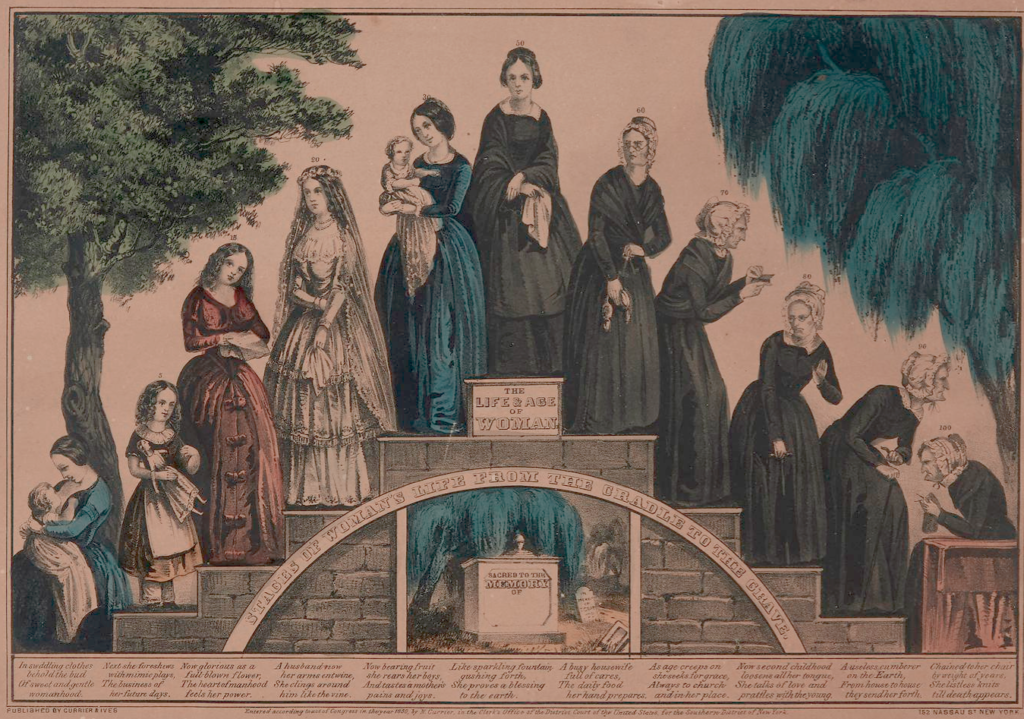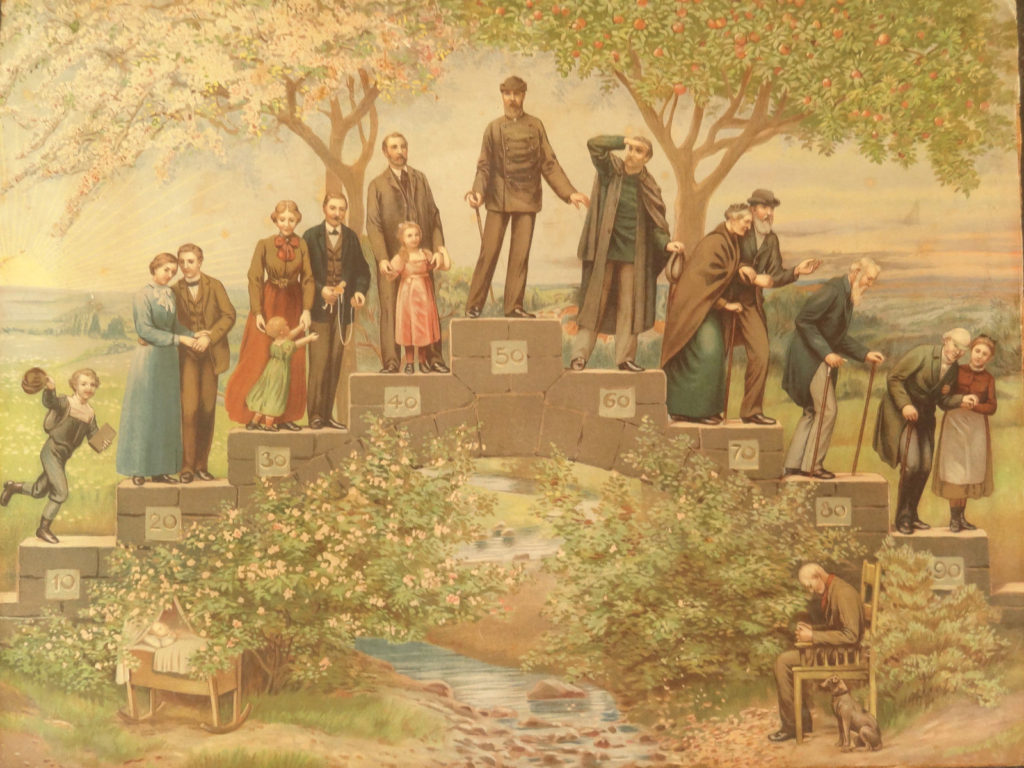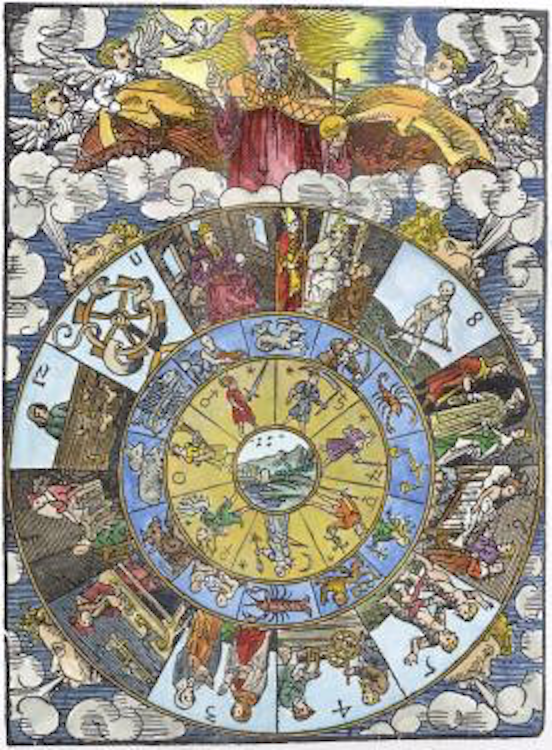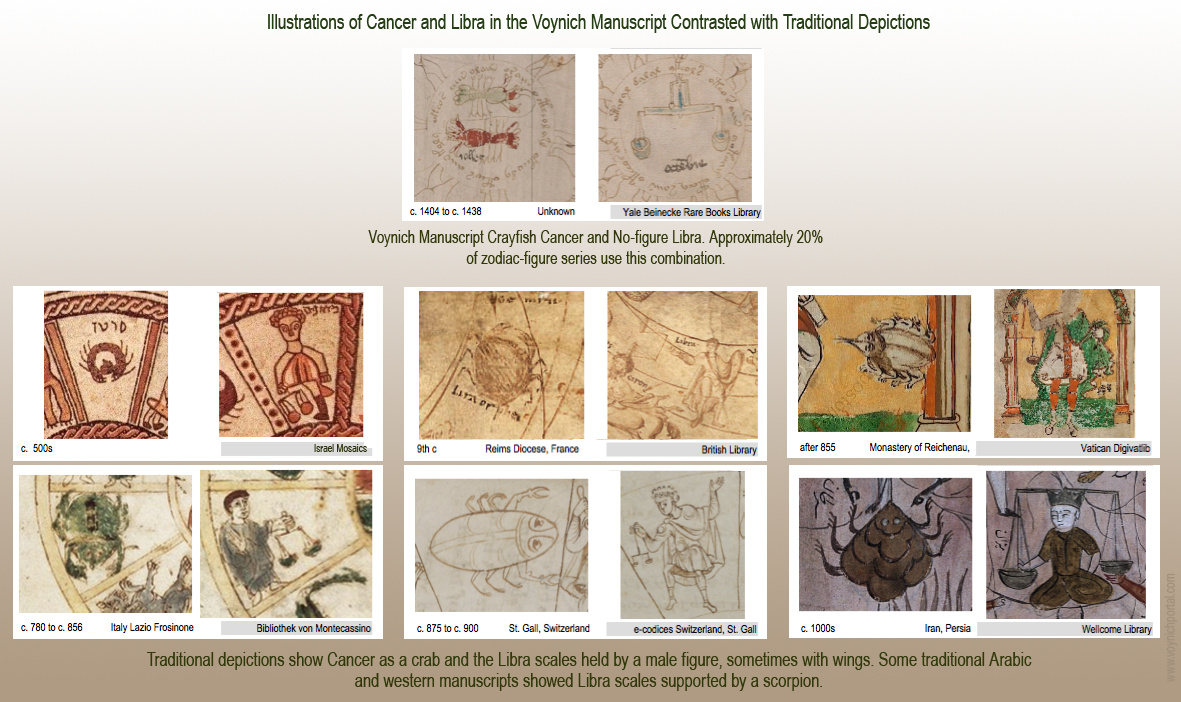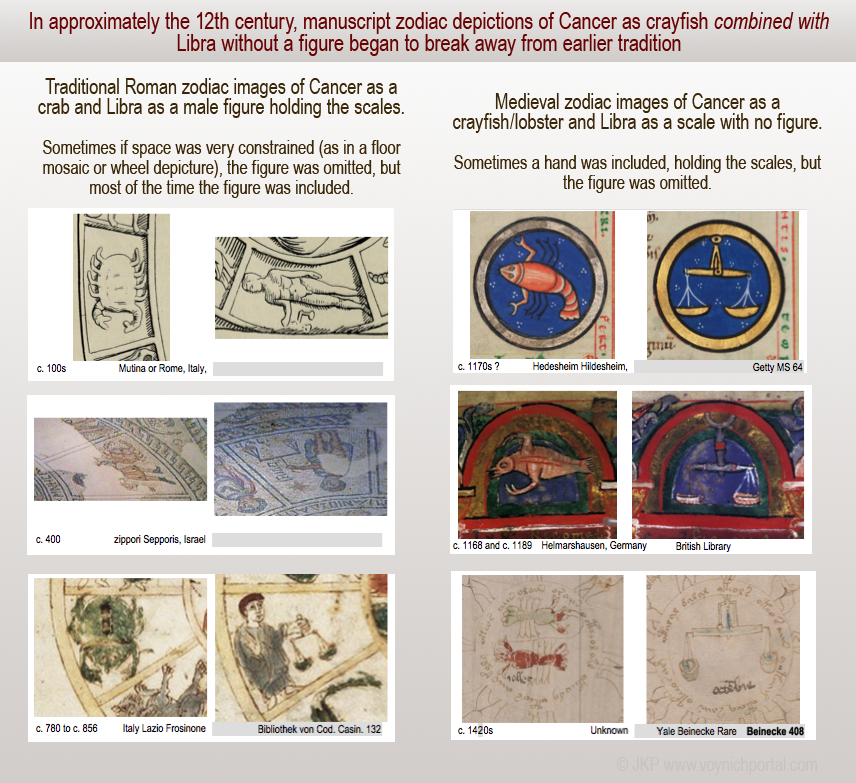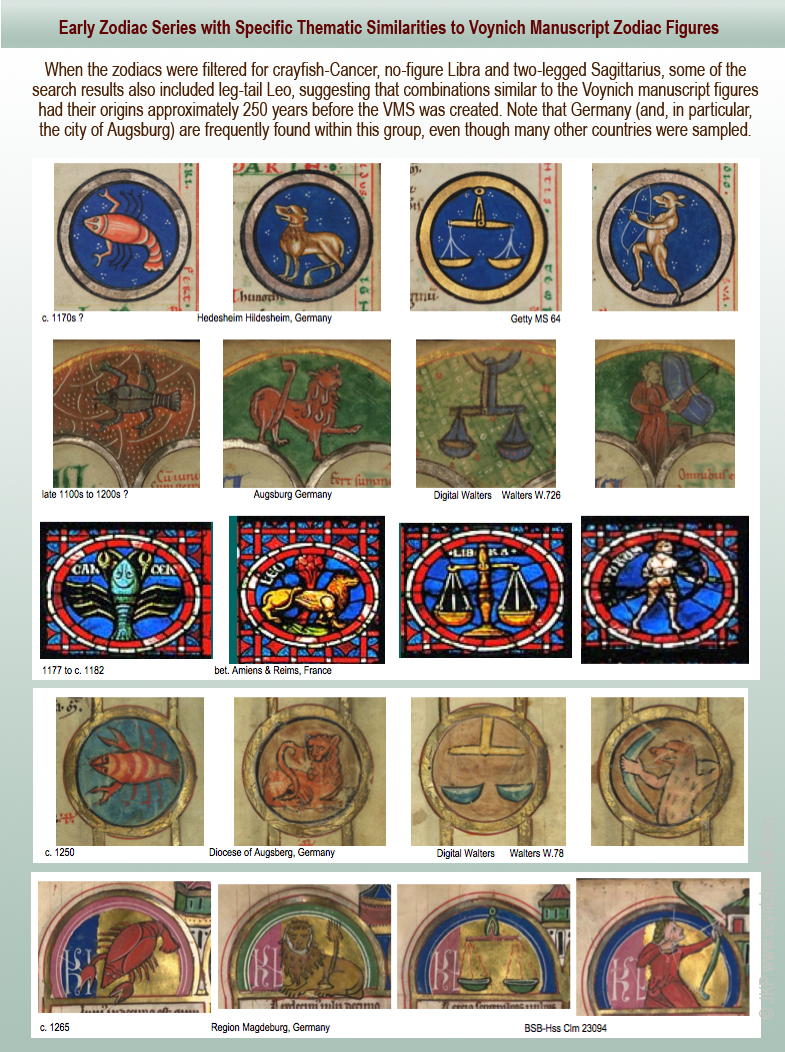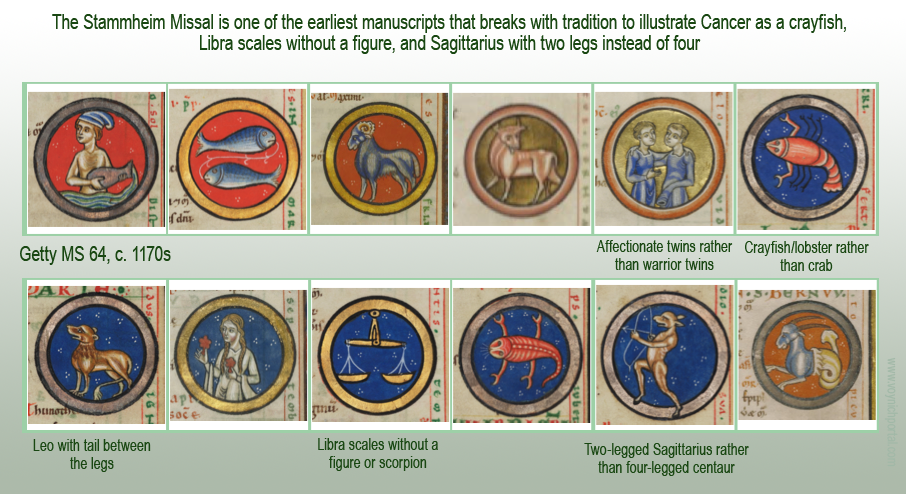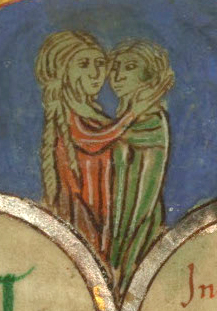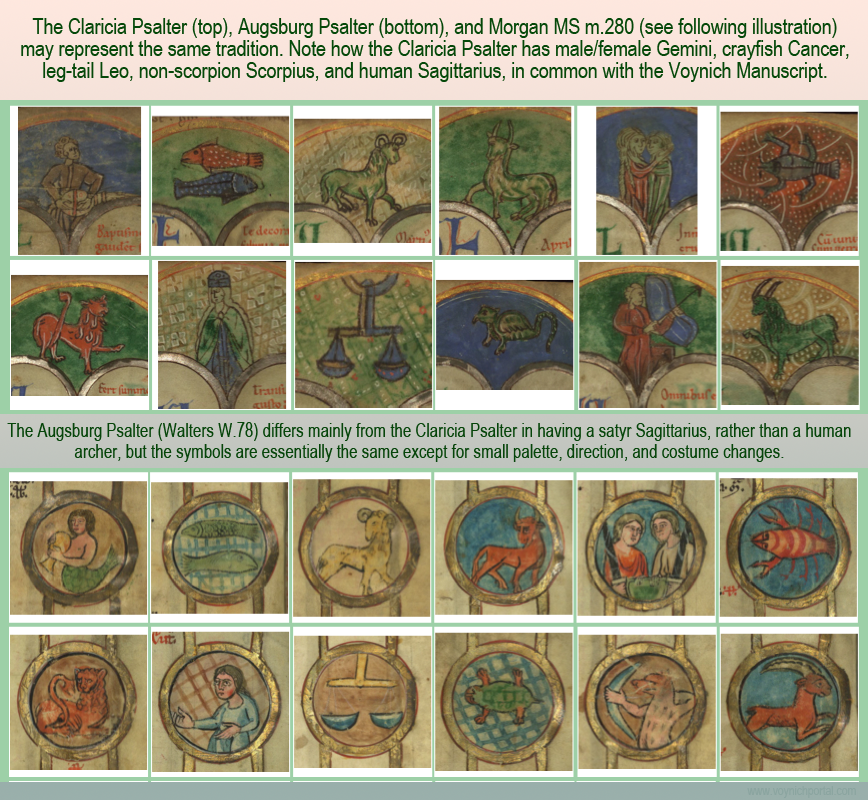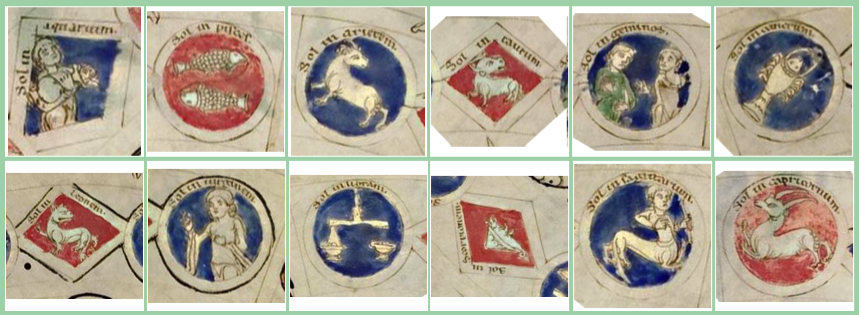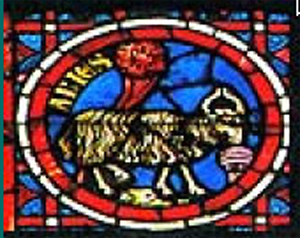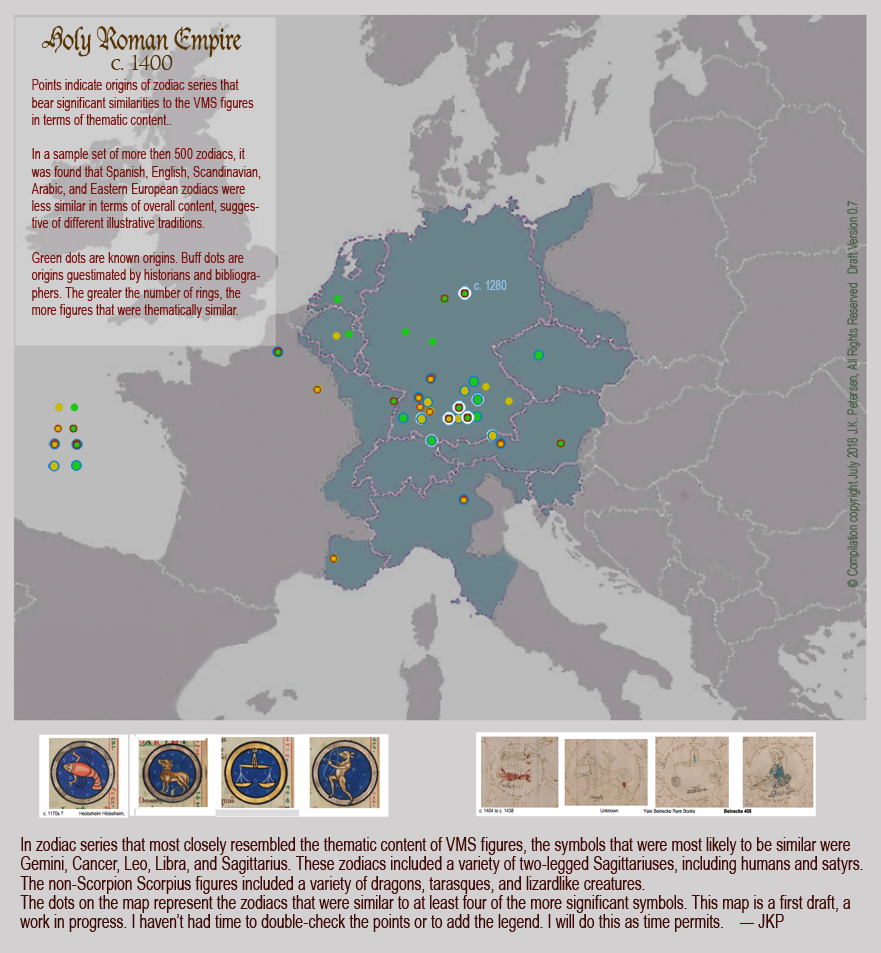10 December 2019
In 2016, I posted several blogs suggesting the imagery around the VMS zodiac figures might be cycles of life. In medieval times they called this the Ages of Man but since the nymphs are mostly women and some of the VMS cycles are specific to women’s physiology, I thought “stages of life” might be more appropriate.
I have less doubt about this interpretation than many aspects of the VMS, but I didn’t hear much support for the idea. The nymphs have variously been interpreted as star charts, parts of a calendar, and numerous other ideas (I have other ideas too, but the one I prefer for this specific wheel is stages of life). I intended to follow up the blog with more examples years ago, and this blog has been sitting in draft form since June, but other lines of research always intrude on continuing a series so, belatedly, here it is…
Ages of Man
Before we look at Ages of Man, keep in mind that classical Ages of Man (as described by Ovid and Hesiod) focused more on the evolution of mankind from gods, titans, heroes, to iron-age man, and less on the evolution of modern humans.
In the Middle Ages, dependence on classical beliefs began to wane. The concept of the Ages of Man still retained some classical ideas, but focused more and more on the individual’s journey through time. The stages of wo-man lagged behind the stages of man, but were gradually acknowledged in the Renaissance and early modern periods.
Unwinding the Zodiac-Figure Nymph-Wheels
Below is an overview of the folio, and following that, the unwound series of nymphs I posted in April 2016 (the figures surrounding the f70v fish).
Note: In this overview, I am not entirely certain if the tipped-over barrels in the center ring, which I think of as coffins, are being entered (as the last stage of life), or exited (as the soul ascends to the after-world), so the arrows in the inner ring might have a different start-point than indicated here, but either way, the basic idea is the same, the outer wheel is maturation and middle age, the inner wheel is older age with a sugar-coated version of death or possibly one of ascension:
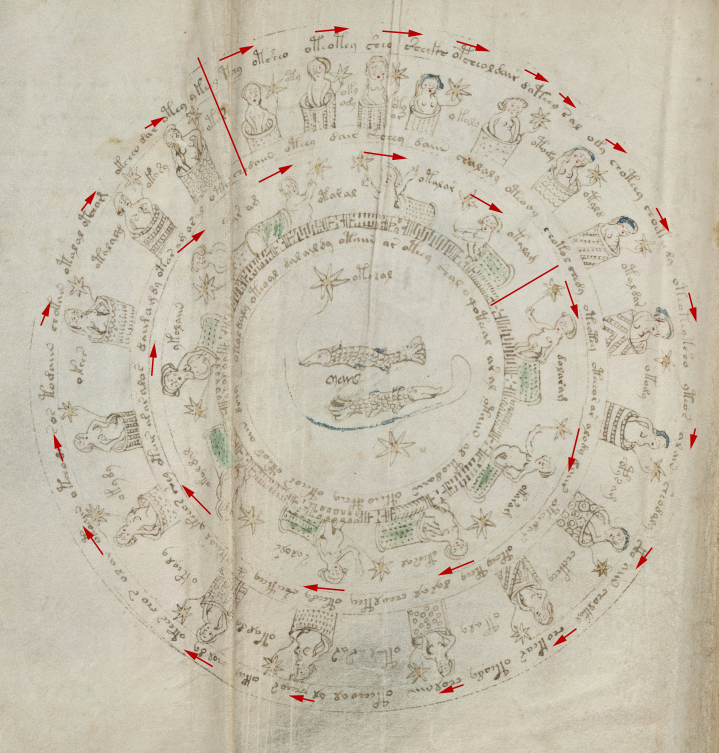
In 2016, I suggested this was a life cycle from pre-adolescence to old age.
Note how the nymphs in the outer ring go from skinny unpregnant pre-adolescence through child-bearing years and middle age, to tipped-over baskets that resemble caskets. The age progression and tipped-over posture gave me a hint of their possible meaning:
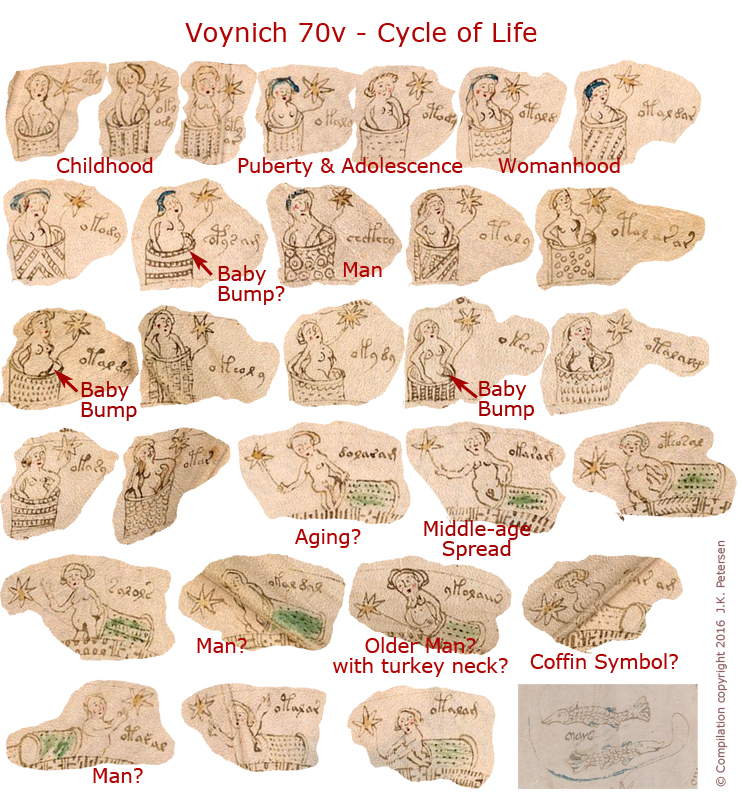
I believe this is a cradle-to-grave sequence, but did such a concept exist in medieval society?
Yes, very much so, and it was drawn in a variety of ways. Here are some examples…
Cradle-to-Grave Sequences
This stages-of-life diagram is a simple timeline. Note how the first figure is young, the second-to-last is hunched, and the last figure tips over.
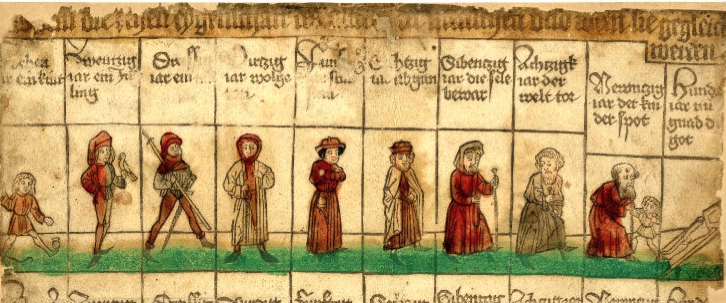
In classical and medieval times, the ages of life were usually described in six to eleven stages…
Plato described nine stages. Isidore of Seville (6th century) lists six: infantia, pueritia, adolescentia, juventus, gravitas, and senectus.
Shakespeare eloquently counts seven:
All the world’s a stage, And all the men and women merely players, They have their exits and entrances, And one man in his time plays many parts, His acts being seven ages…
Sometimes there were fewer stages. The following 13th- or 14th-century example (sorry, I couldn’t find a shelfmark) roughly follows Isidore’s classification (relative to the VMS, note the Gemini-like amorous couple in the adolescence circle):

Postscript 21 March 2020: This illustrator managed to include seven ages of man within the tiny space of a historiated initial, beginning at the bottom and going clockwise:
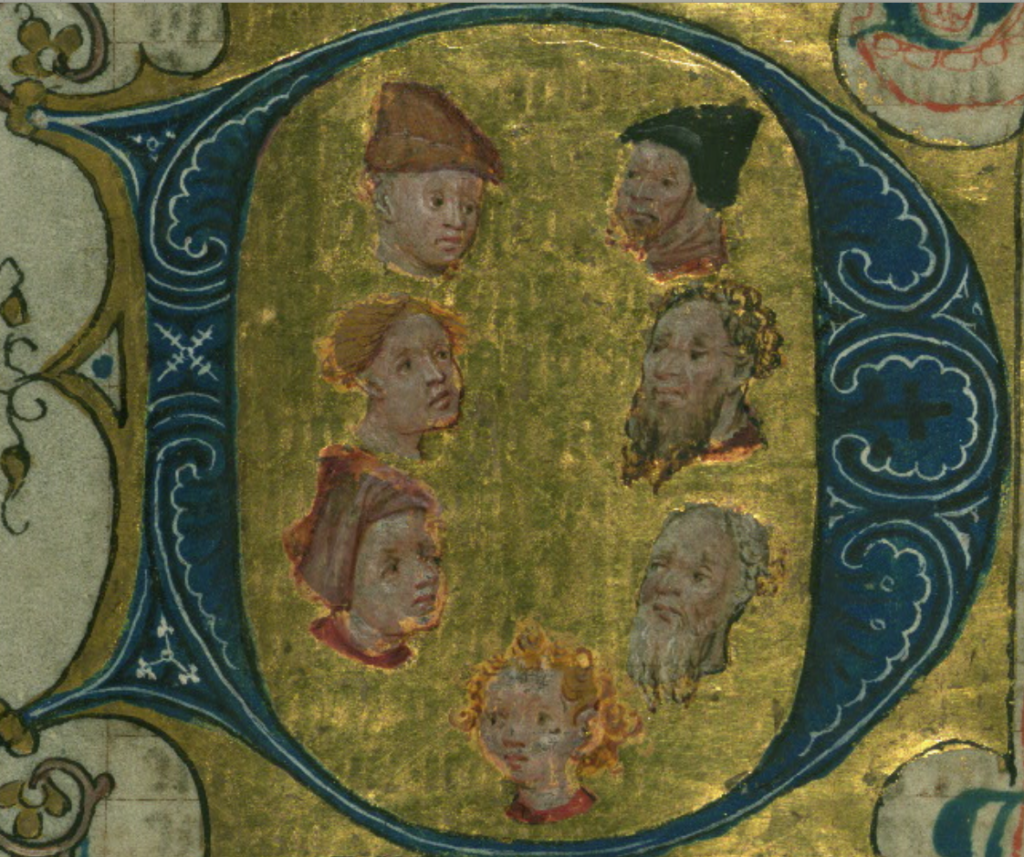
Sometimes the cycle was depicted like a generational photo, rather than as a chart. Here are two examples depicting seven stages:
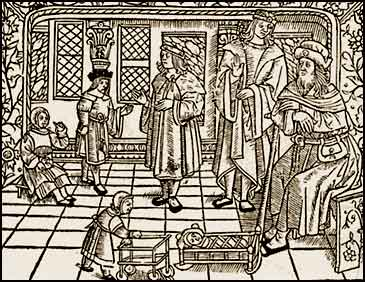
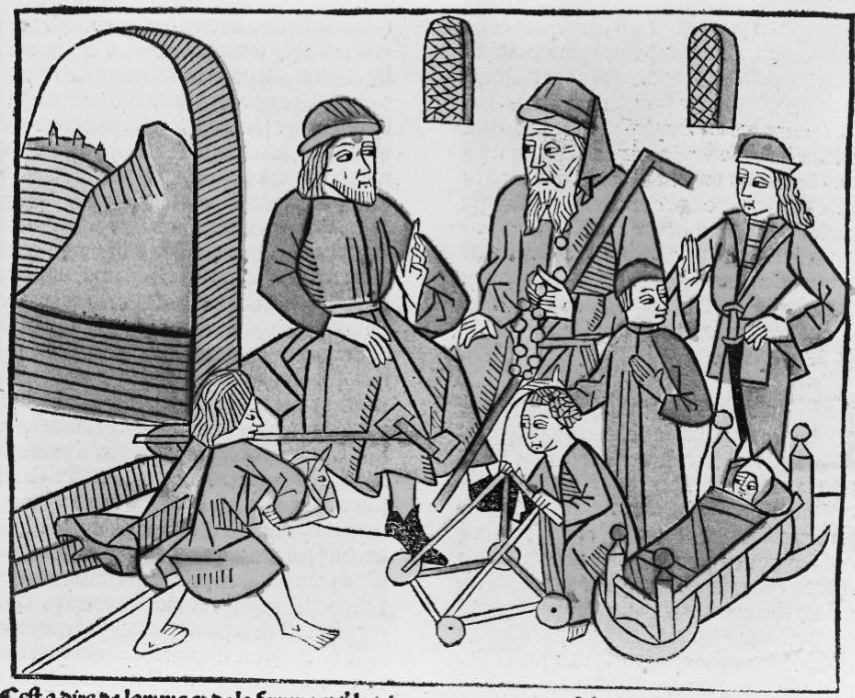
In other words, there were no set rules on how to organize the drawing, or how many stages to include. As long as the idea of cradle-to-grave was present, the illustrator could draw the passage of life in many ways.
Postscript 28 March 2020: I wanted to add this depiction of the Stages of Life because it’s a bit unusual. Most illustrators tried to compact the stages into one image. In this case, the stages were spread over two different folios several pages apart, with commentary in between (Cod. pal. germ. 471):
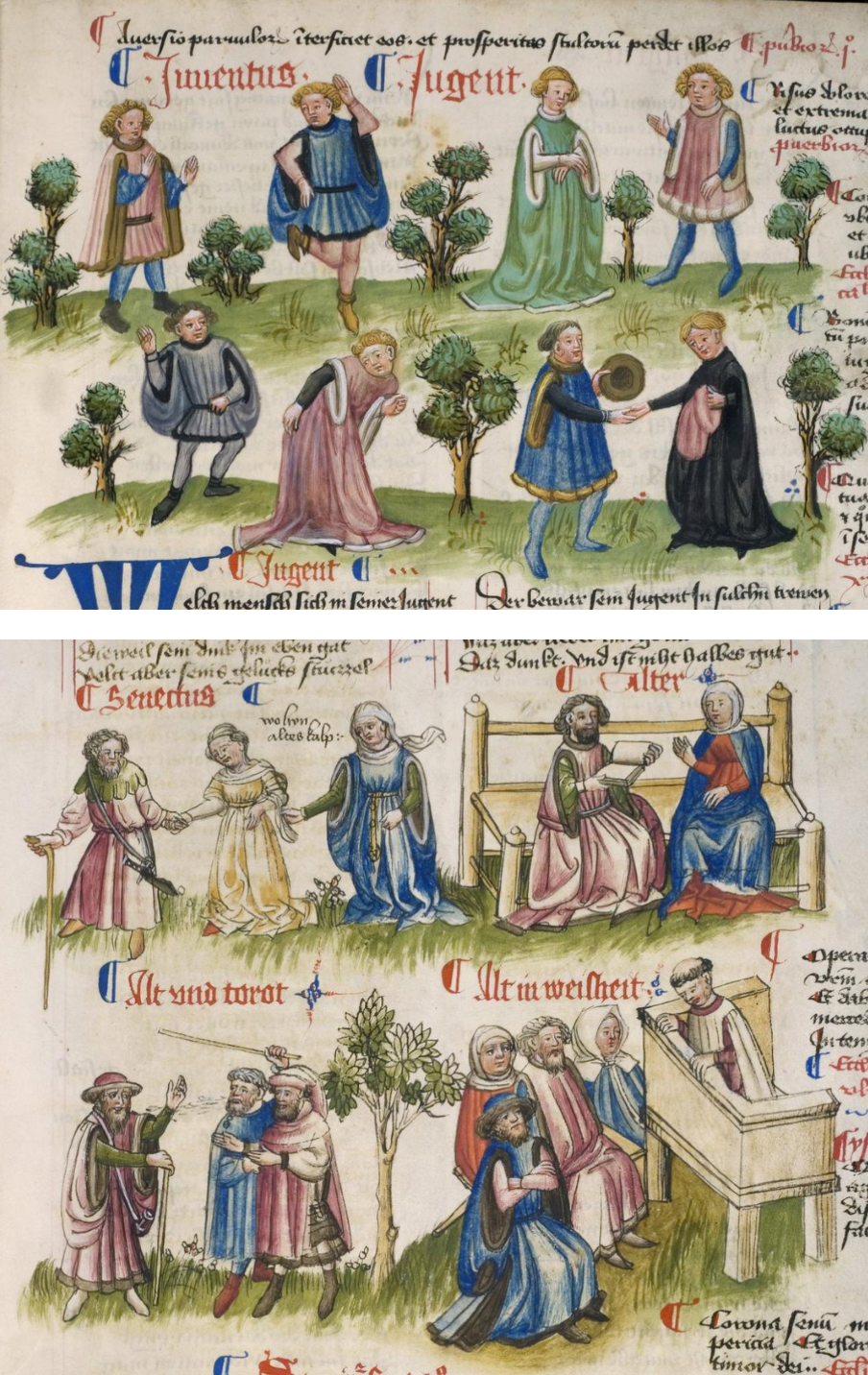
Ages Depicted Staircase-Style
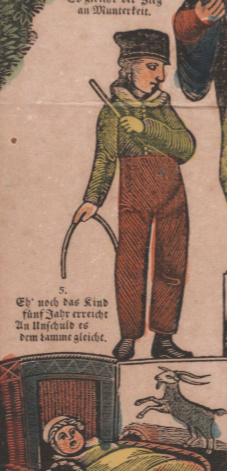
Staircase drawings were especially popular in the 16th and 17th centuries and these later examples are of interest because the ages relate to animals through verse, and four of the animals are common to zodiac sequences (ram, bull, lion, goat). This is not a direct reference to astrology, it’s probably biblical, but it is interesting because depictions in other styles sometimes include astrological references (discussed further below).
Here’s the background on some of the stages-of-life animal drawings… There are biblical interpretations about the life of man being increased from 30 to between 70 and 100 years by adding in the ages of animals who begged to live shorter lifespans to ease their lives of burden.
The idea of animals relating to the ages of man is reflected in a classical Greek poem by Babrius:
Horse, bull, and dog appear freezing before the house of man. He opens the door, receives them kindly and offers them food; the horse gets barley, the bull legumens, and the dog food from the table. The animals filled with gratitude towards the man give up part of their years in return for his hospitality. First the horse repays with his years, that is why man is insolent in his youth; then the bull, therefore the middle-aged man has to work hard; last comes the dog with his years…
—L. Landau, The Journal of English and Germanic Philology, 1920
Here is one of the later staircase-style cradle-to-grave illustrations. I include it because it shows how stages were increased over the smaller set from classical times:
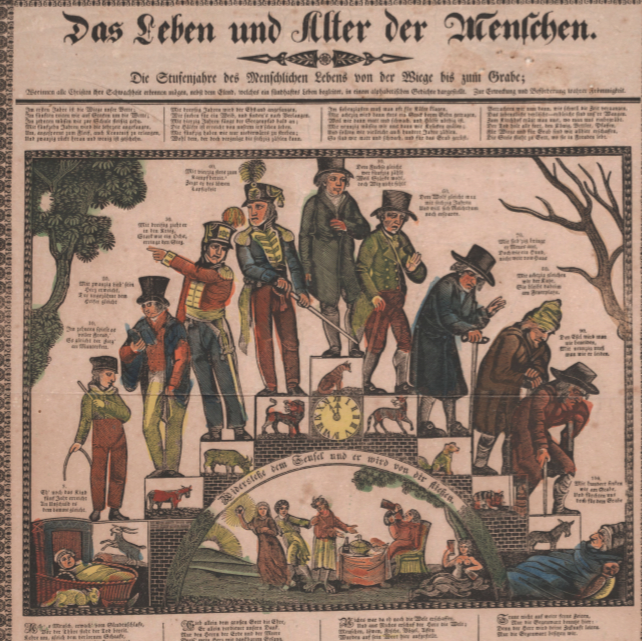
The above drawing illustrates eleven stages with animals inset in the steps. The cradle and grave are on the ground, perhaps expressing the idea of “dust to dust”:
The verse for the child and the man of 30 are as follows:
Eh’ noch das kind fünf Jahr erreicht, Un Unschuld es dem ramme gleicht. (Before the child reaches five, it is innocent/unknowledgable about the ram.)
Mit dreißig zieht er in den Krieg, Stark wie ein Ochs, erringt den Sieg. (At thirty, he goes to war, strong like an ox, achieving the victory.)
Post-medieval cradle-to-grave illustrations often include biblical references in both the illustrations and the text, and the overall CtoG theme was included in hymns and prayers.
The Feminine Angle
Medieval depictions of the stages of life usually emphasize men, but a lightly modified version for women was created for commercial sale in later years.
This is a simplified version, without animals or verses, with a greater emphasis on marriage and children, as published in the early 19th century for women:
There were also versions with both men and women that might be more similar to the VMS. This one includes includes 17 figures (and a dog) and 11 stages:
Here is a similar theme from romance to old age, played out by flamboyant characters:
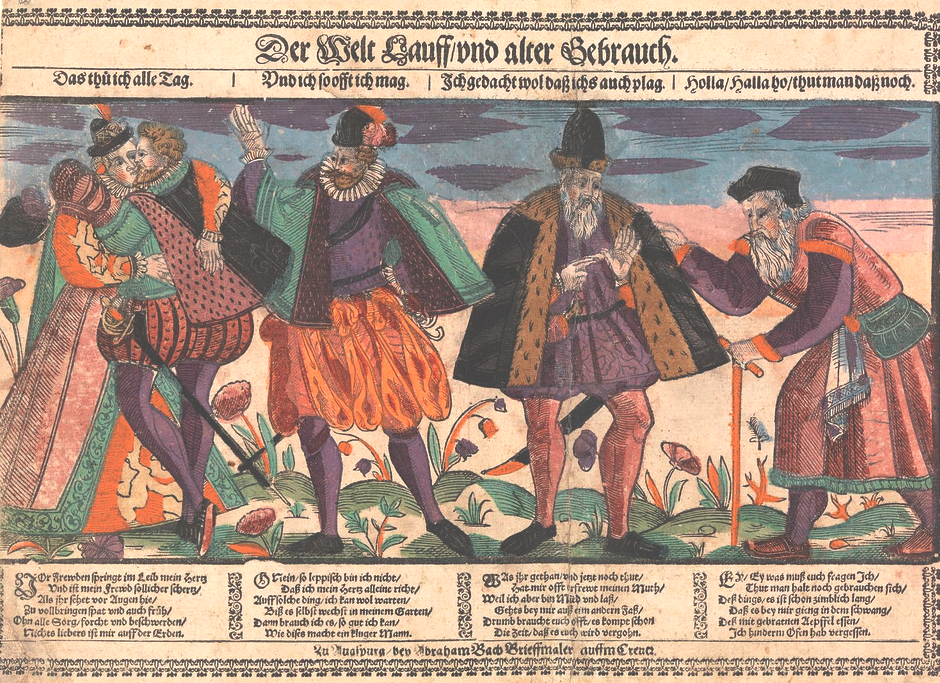
The following example is more sparse than some, only six stages (or five, depending on how one interprets the top step with two figures), but includes animals, and emphasizes the cradle-to-grave aspect with a cradle and casket at either end:
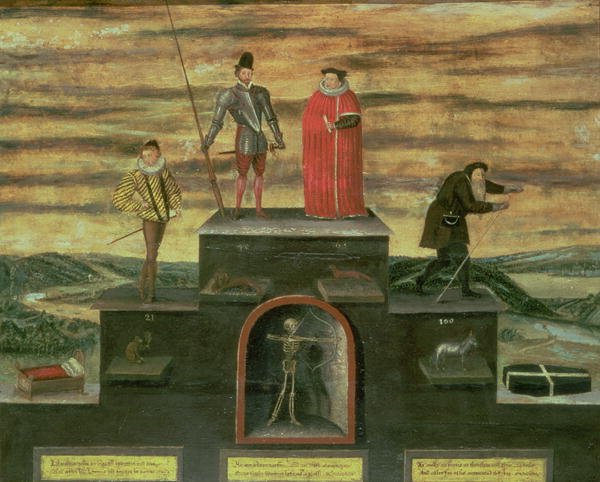
Stylistically, these don’t have the same look or feel as the VMS nymphs, but in terms of content, there are other formats with larger numbers of figures. This one is populated by 24 figures on the ground and steps, plus about 24 more in the round frames, along with some overseers (including an angel and a demon). In other words, more than the VMS:
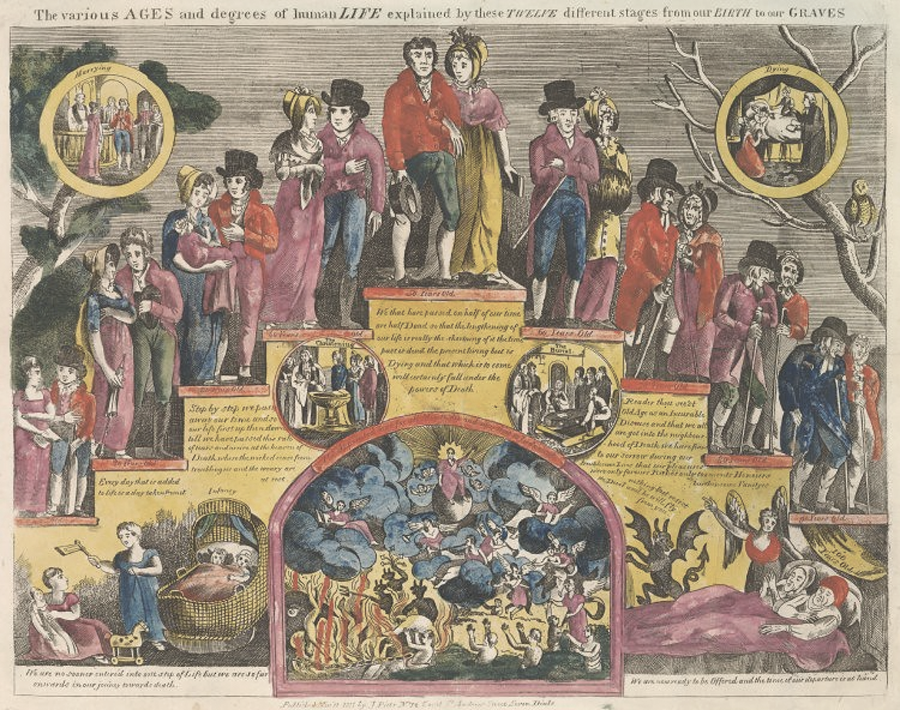
So those are some timeline, generational, and staircase formats, but there are also some based around wheels.
Co-opting the Wheel of Fortune Theme
Some stages-of-man illustrations borrowed from the “wheel of fortune” concept that was popular in the Middle Ages, with slight modifications in the characters. Note that this differs from most of the Wheel of Fortune drawings in that Fortuna is not present (there is a skeleton instead), there is no king at the top, and the emphasis is on maturing and aging rather than on one’s material standing, with a young boy on the left and a mostly prone figure on the bottom-right (and graves in the background):
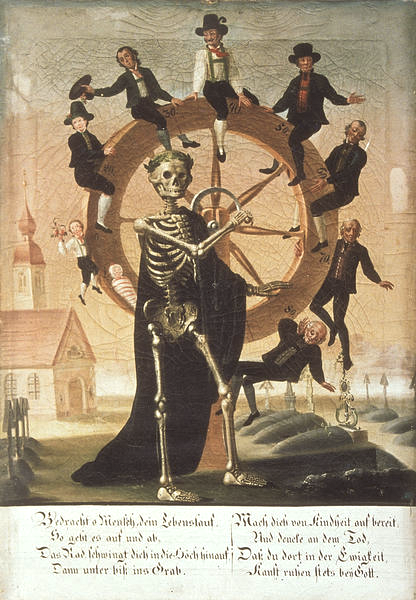
At this link you will see many more arrangements.
What about earlier examples?
In this Schwabian manuscript, blindfolded Fortuna is turning the wheel, but the main theme is clearly not a wheel of fortune. It represents cradle-to-grave with labels similar to those used by Isidore of Seville. An angel waits in the casket below:
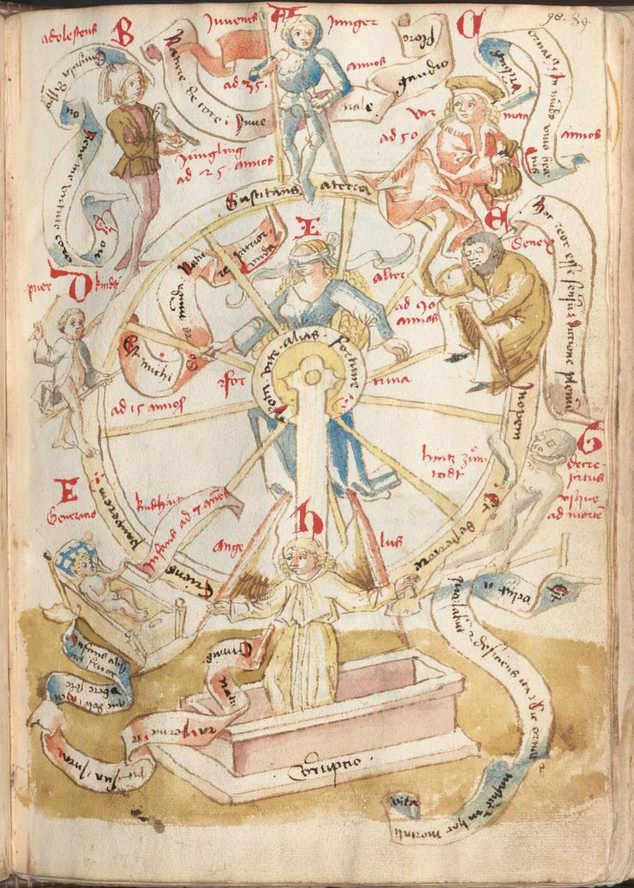
The idea is also reflected in sculpture, as in this example from the tomb of Peter 1st in Alcobaça, who died later in the 14th century. Unfortunately, it is horribly defaced, but in the inner ring, you can see the Fortuna theme, and in the outer ring are the stages of life. You can make out a mother and infant in the lower left, and if you follow the figures clockwise through their life cycle, you eventually reach the prone figure under the lid of a casket at the bottom:

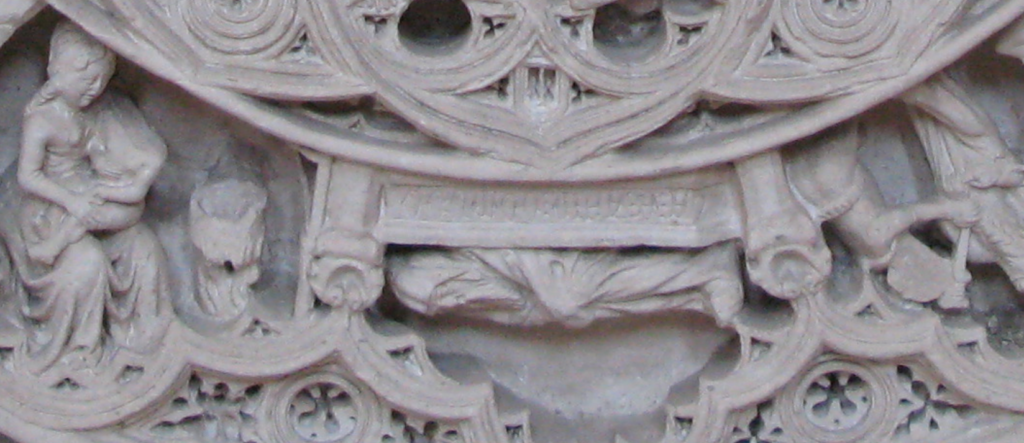
Here is a late-15th century blockprint of the stages of life as a wheel. Except for the wheel, it is similar to some of the staircase drawings:
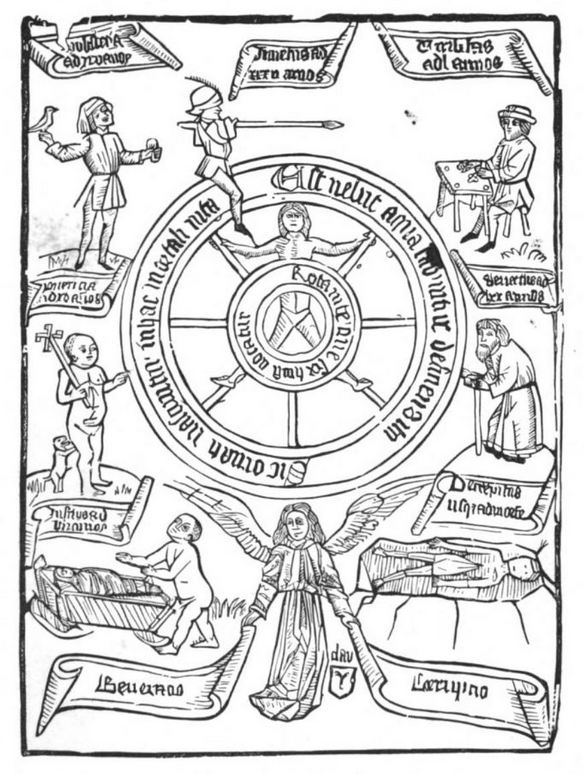
The Wheel of Life might be the same idea as the VMS, but it doesn’t feel the same in terms of drawing style and so far there’s very little connection with zodiac figures. Are there stages-of-life drawings with astrological connections?
Connections to Astrology and Astronomy—Wheels with “Stars”
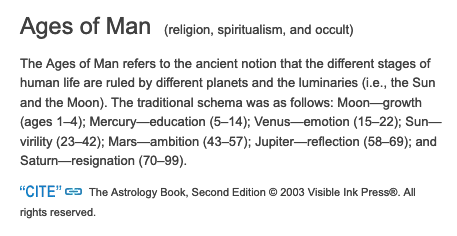
There is a variation on the Wheel of Fortune that has a stronger relationship to astrological/astronomical concepts than the previous examples. In this woodcut, Fortuna is replaced by an angel, the earth is in the center, and the seven stars or “planets”, as they called them (including the sun and moon), orbit around it.
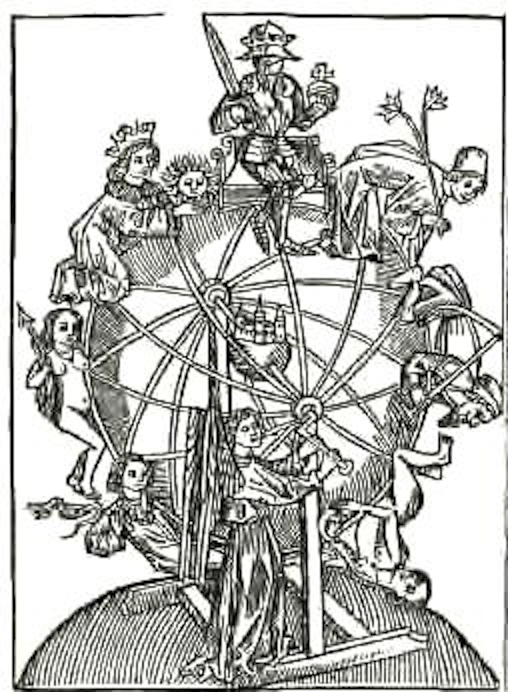
The following example from the Psalter of Robert de Lisle, originated in England in the early 1300s. This is often called The Ages of Man but you might notice small differences between these early depictions and the way they drew the Ages of Man in the 15th and 16th centuries.
The general format is circular, with a figure in the center, and there is an infant in the first circle (7 o’clock) and a prone figure near the end (4 o’clock). In this way it is similar to the sculpture of Peter 1. The actual lifespan is shown in eight stages, plus a circle for the eulogy, and a sarcophagus for a total of ten. The labels mention infancy, youth, aging, and death, as was common for classical stages:

Medieval Classification of Stages
The stages in the following illustration from De Lisle Psalter are sandwiched together with Bible stories. Following the Tree of Life (the Jesse Tree) is a wheel with 12 stages of life, written as abbreviations for birth (Nasce[n]s), infancy (Infans), childhood (Puer.), adolescence (Adolesce[n]s), etc., counter-clockwise around the circle until one reaches death. In the corners are symbols for the four evangelists. The central figure is usually Jesus or God (in older manuscripts, the central figure is sometimes a personified sun):
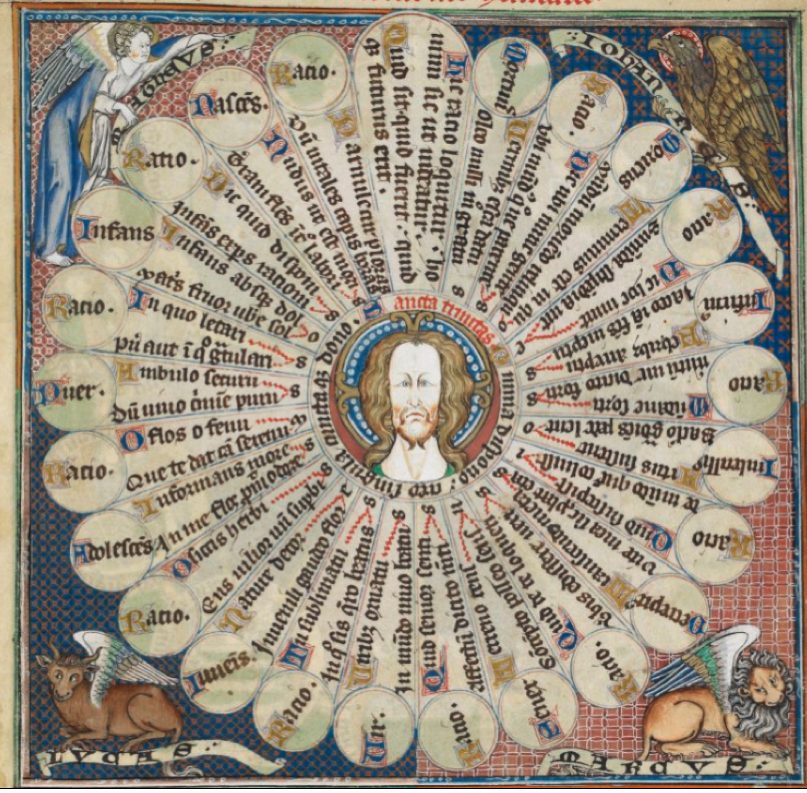
Could images like this, arranged in a circle, have inspired the VMS creator to combine zodiac figures with the stages of life? The VMS is rife with illustrations that hint at concepts that have been combined, but they are not quite overt enough to be sure.
The Zodiac and Ages of Man
The idea of associating the stages of man with zodiac figures (thus creating 12 stages) may have come to us through Hebrew sources (e.g, the Midrash Tanhuman referenced by Landau, 1920).
Astrological mansions (affairs of man) are combined with zodiac symbols in the following example by Erhard Schön. They are expressed as figures within three concentric circles. The inner circle includes the seven “planets” that are present in many medieval cosmological drawings, surrounded by twelve zodiac figures, further surrounded by twelve mansions in the outer circle. Since this diagram was created by a card-maker (1515), it is not surprising that some of the outer figures are also found in Tarot cards.
The subject matter is slightly different from the VMS—it generally focuses on affairs of men, and all the zodiac figures are in one diagram, but the general format (zodiac figures combined with other figures in concentric wheels), is more like the VMS than many of the previous examples. Note how the the numbers run counterclockwise:
If you are curious about what the mansions represent, look at the seventh house (on the right, next to the skeleton) and you will see the marriage ceremony. The skeleton itself refers to death, wills, and testaments. The tenth house represents kings, generals, and other leaders. The eleventh house is not as easy to discern in this image, but it represents friendship and fidelity.
Astrological References from Eastern Europe
In Bulgaria, there are frescoes that combine several ideas, including night and day, the seasons, the stages of life, and zodiac figures.
For example, the wheel in the Church of the Nativity in Arbanasi is one of the closest parallels I’ve found so far to the stages of life wheel in the VMS. It has concentric circles of figures, a number of which are unclothed. The zodiac figures are traditional, however, are all included in one wheel, and are not of the same iconographic subset as the VMS zodiac figures, but it’s still worth keeping this fresco in mind (the labels in the green band are the months of the year). Unfortunately, the images are copyrighted so you will have to click the link.
Eastern Wheels
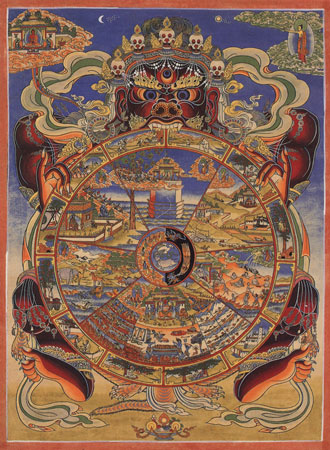
The wheel of life or Wheel of Becoming (called bhavacakra भवचक्र) is a prevalent theme in buddhist art, but it follows a different scheme from western manuscripts, emphasizing the idea of karma and rebirth and planes of existence, along with the different realms (animal, human, etc.). They don’t usually include zodiac figures in the same way as some of the western manuscripts and Bulgarian frescoes.
When zodiac figures are included in Wheels of Becoming, they are typically in the eastern style, composed entirely of animals and are usually symbolic of various emotions or states of being.
Many of these Buddhist wheels are later than the 16th century.
I believe the VMS wheel expresses a cradle-to-grave theme rather than eastern concepts of reincarnation.
Textual Versions of Stages of Life
Many manuscripts that include herbs, information on bathing, or astrological information are not illustrated. The same is true for Stages of Life.
L. Landau (1920) mentions a rhyming poem about the stages of life that I think is important for textual reasons related to the VMS. It is not medieval, it was written in Venice in 1554, but it stands out as an example of how languages and scripts can be jumbled together in less obvious ways, something that could easily have happened in the 14th or 15th centuries, as well.
Bodley Can. Or. 12, Neubauer 1217 (fol. 211b–213) is a slightly bewildering combination of German/Yiddish and Judeo-Italian that was not penned in Latin script—it was written using Hebrew letter-shapes even though it is not in Hebrew:
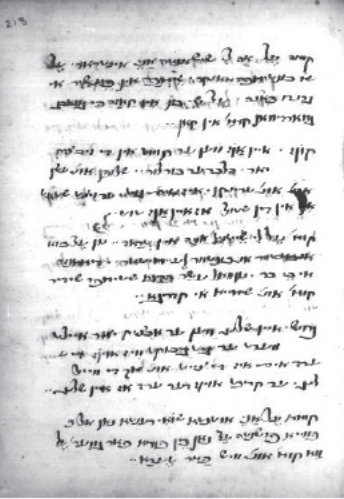
Does the Stages-of-Life concept apply to other VMS wheels?
As mentioned in previous blogs, I believe that several of the other wheels have similar themes, but that they focus and enlarge on more specific stages, such as menstrual cycles and childbearing cycles.
For example, in the 2016 blog, I posted an unspun cycle from 70v (green Aries, which is on the same foldout as Pisces) that focuses on female nymphs and their journey through womanhood. I believe it begins with a pre-adolescent maturing into a woman and acquiring a large [probably pregnant] belly (and possibly stretch marks).
Notice the fancy veil on the sixth nymph. I’ve noticed a fancier veil on other nymphs in contexts where it might represent marriage (I’m not completely certain of this because diadems were often used in preference to veils, but it depended on the region and time period):
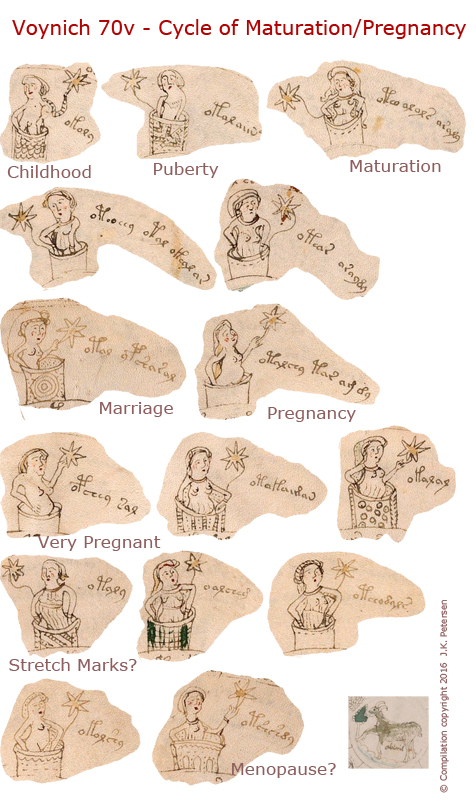
When I was researching medieval wedding customs I read that some couples lived together and didn’t get married until the woman became pregnant. The logic was that the husband-to-be wanted to be sure his fiancée could produce children. This was not the custom everywhere, there was a gradual shift from Pagan to Christian traditions that differed from region to region, but living together before marriage was not as uncommon or as counter-culture in the 15th century as I originally assumed.
It’s possible the lines on the belly of the nymphs in this sequence represent stretch marks. I say this based on looking at patterns in all the folios but I am not entirely sure this is the correct interpretation. I do think it’s worth considering, however, because the lines are never on the pre-adolescent girls or male nymphs. They are usually on the ones with big bellies or the thinner ones that follow soon after the big bellies. As far as I can tell, this sequence represents two pregnancies, perhaps to show that it happens more than once in a woman’s life.
I found it particularly interesting that the bellies in all the green Aries nymphs are prominently displayed so you can see if they are thin or large, except the last one…
Since the sequence starts with a pre-adolescent girl (I suspect the genitals are displayed above the edge of the barrel to make it clear it’s not a boy), I’m wondering if maybe the last nymph, with the hidden belly, represents menopause, the point at which there are no more buns in the oven.
Related Wheel-Themes
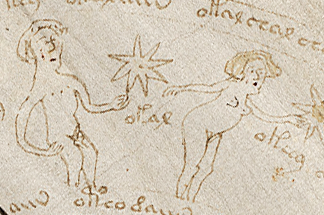
The nymphs around affectionate-Gemini relate to these themes, as well. At 2 o’clock, there is a lustful male (I’m pretty sure his flag is raised) with his eye on the nymph in front of him.
There are several other males surrounding Gemini, some of them clothed (it’s a bit of a leap, but I am reminded of love triangles, which were popular in medieval literature, stories such as Tristan and Isolde, the forerunner to the story of Guinevere):
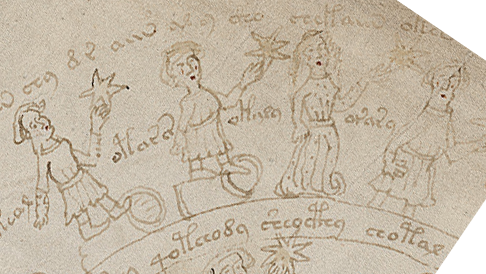
I wanted to go into more detail about these other cycles, but it’s far too much information for one blog, so I’ll leave it for now and will fill in the rest as I have time.
Summary
It should be clear from the above examples, that there was no specific format for cradle-to-grave illustrations. They can be timelines, staircases, wheels, or anything else that gets the idea across. The number of figures isn’t rigid either. What is common to all of them is the progression from youth to old age, and old age is frequently represented by semi-prone or prone figures and may include various styles of crypts or coffins.
I see 70v Pisces nymphs as a cradle-to-grave theme and green Aries, Gemini, and some of the others, as subsets of the cradle-to-grave idea (an expansion of the middle years, with the focus on romance and child-bearing). It’s appropriate that the Pisces and Aries nymphs would be side-by-side, and perhaps intentional that the pregnancy cycle is on Aries, the symbol we most associate with spring.
J.K. Petersen
© Copyright 2019 J.K. Petersen, All Rights Reserved

